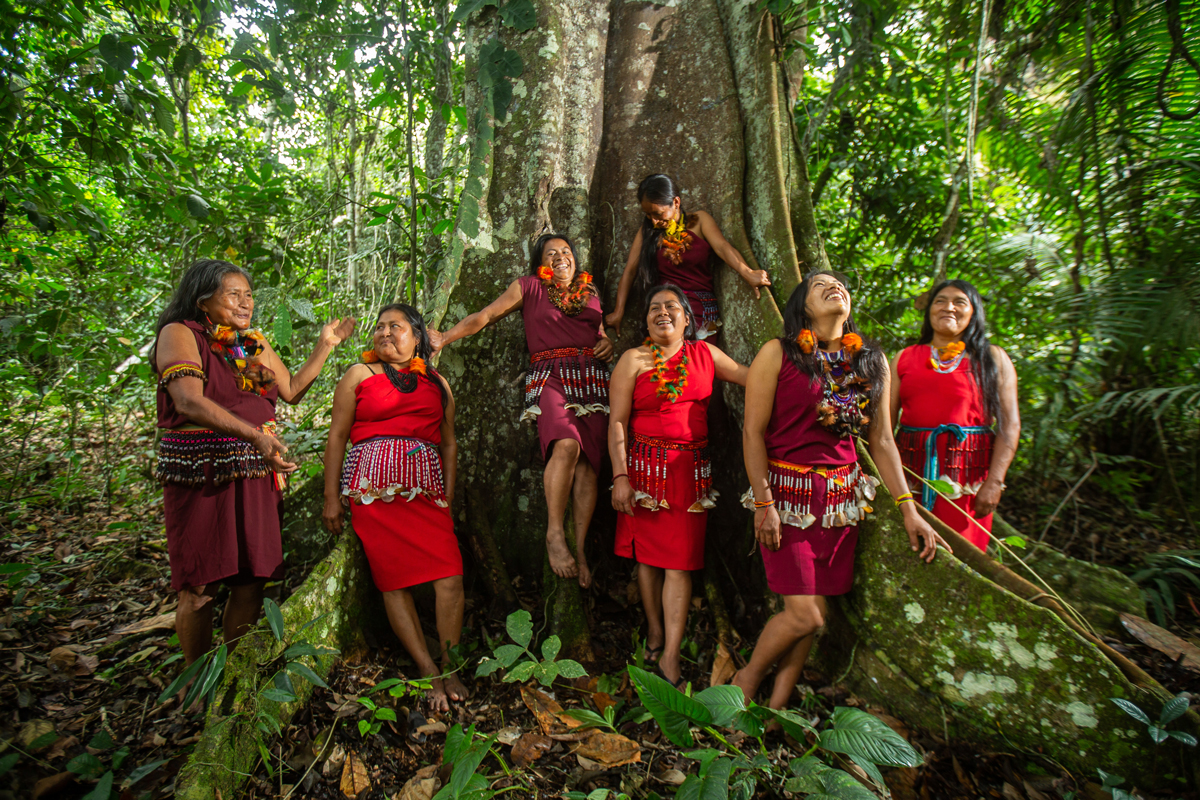Gender-based violence (GBV) is estimated to affect more than one in three women worldwide, negatively impacting women’s health, education, economic, and political opportunities.
Often under-addressed, there is one key sector where GBV is prevalent: environmental programming. GBV and environmental issues are linked, and their interactions are complex, diverse, and multilayered.
Research shows that environmental degradation, loss of ecosystem benefits, and unsustainable resource use create crises that disproportionately affect women and girls. For example, after two tropical cyclones in Vanuatu, there was an estimated 300% increase in new cases of domestic violence.
While gender-based violence and environmental issues have typically been addressed separately, informed, integrated, and innovative approaches are needed to improve outcomes for both women and the environment.
This is where our partnership with USAID comes into play.
Resonance worked with USAID to deploy open innovation for more effective prevention and response to gender-based violence (GBV) across environmental sectors. Through the Catalyst project, we collaborated with USAID’s Office of Gender Equality and Women’s Empowerment to co-design and implement the Resilient, Inclusive, & Sustainable Environments (RISE) Challenge.
Let's briefly review the RISE challenge before showcasing a few global problem-solvers who are leveraging innovative approaches to counter gender-based violence (GBV).
How the RISE Challenge Addresses Gender-Based Violence in the Environment
USAID’s Gender Equality and Women’s Empowerment (GenDev) Hub is working with the Catalyst Project, implemented by Resonance, to design, launch, and manage the RISE Challenge.
RISE is an open innovation competition to support the innovative application of promising or proven solutions to address gender-based violence in environmental programming. With $2 million in funding, the RISE team selected nine winners to implement projects in Colombia, the Democratic Republic of Congo (DRC), Fiji, Guatemala, Kenya, Peru, Uganda, and Vietnam.
The RISE Challenge is supporting these nine organizations as they address several areas of concern, including:
- GBV and land rights
- GBV in artisanal and small-scale mining
- GBV in conservation
- GBV against indigenous women
- GBV in resource-based conflicts
9 Global Innovators with Solutions to Gender-Based Violence
Here are nine global innovators with bold approaches to counter gender-based violence (GBV).
1. Trócaire
Trócaire is working with the Land Equity Movement of Uganda (LEMU) and Soroti Catholic Diocese Integrated Development Organization (SOCADIDO) to address GBV and improve women's land tenure and property rights in Uganda. Trócaire anticipates reaching nearly 28,000 beneficiaries by engaging the community through the SASA! Faith approach – a proven methodology for addressing the power imbalances between men and women – and a gender-sensitive alternative dispute resolution mechanism to resolve land conflict.
2. Women for Women International (WfWI)
WfWI is working with Innovation and Training for Development and Peace (IFDP) to promote women’s rights by engaging male leaders and community members. The initiative is improving 300 women’s access to land, while also ensuring women have access to gender-based violence support services in the Democratic Republic of Congo (DRC).
3. Action to Protect Women and Abandoned Children (ASEFA)
ASEFA is working with the Harvard Humanitarian Initiative (HHI) and two other women-led local organizations to address gender-based violence and environmental degradation associated with artisanal mining in the eastern DRC. The program is engaging 720 participants in a 9-month training program.
4. The Alliance for Responsible Mining (ARM)
ARM is working with MIT D-Lab at the Massachusetts Institute of Technology to address GBV in the artisanal and small-scale mining sector in Colombia. The program has completed an in-depth gender analysis and is using a movement building approach that will benefit 50 women miners from four mining communities.
5. Conservation International Foundation (CI)
CI is working with PROMSEX to shift harmful gender norms and beliefs about women’s and men’s roles in society, the sanctioning of violence, and community processes for dealing with violence in Peru’s Nuwas Forest.
6. Kenya Wildlife Conservancies Association (KWCA)
KWCA is working with Fauna & Flora International, CARE Kenya, Centre for Rights Education and Awareness, and Taita Taveta Wildlife Conservancies Association to address GBV that contributes to inequitable access to and control of natural resources in conservancies in Kenya.
7. WildAct-Vietnam
WildAct-Vietnam is working with CARE Vietnam and the Vietnam Association of National Parks and Protected Areas to empower local women, leaders, and conservation organizations in Vietnam to address the challenges of gender inequality, harassment, and unsafe working environments that women face in wildlife conservation.
8. Community Forestry Association of Guatemala Utz Che’
Utz Che’ is working with Trees, Water & People to address gender-based violence in community forestry in southern and eastern Guatemala, where natural resource conflicts are an extension of past and recurring injustices to rural communities, particularly to indigenous women.
9. Marstel-Day
Marstel-Day is working with WI-HER, the University of the South Pacific, the Fiji Environmental Law Association, Live & Learn Environmental Education, and Fiji’s REDD+ Programme to promote gender equity and transformation by tackling resource-based conflict and GBV in Fiji.
Open Innovation to Curb Gender-Based Violence in Environmental Programs
Across eight countries on five continents, USAID’s RISE Challenge innovators are helping to reduce gender-based violence in their target communities; inspire environmental organizations to address GBV; and generate tools, resources, and learnings that can help make the world safer, less violent, and more equal for women and girls.
Now is the time to reflect on the widespread challenges that women and girls continue to face around the globe. It's important to also celebrate the dedicated problem-solvers that are leveraging innovative solutions to promote gender equity, reduce gender-based violence, and promote women’s economic empowerment.
Across sectors and around the world, we've seen that open innovation can be a powerful tool for identifying targeted solutions for complex challenges. To explore next steps for open innovation strategy – or to design, launch, and manage an open innovation competition – consult a Design & Innovation specialist.
Photo credit: Marlon del Aguila
Editor’s Note: This post was originally published on March 8, 2021, and has been updated for accuracy and current best practices.




